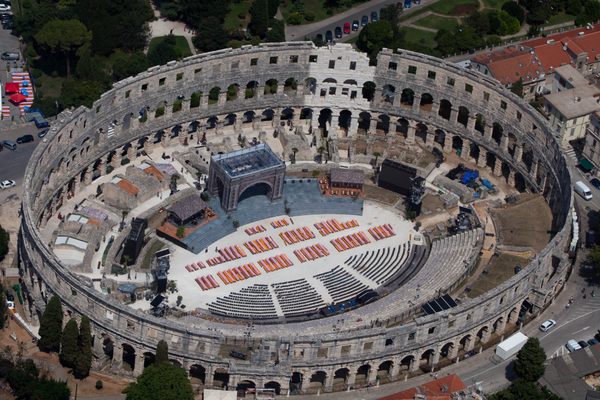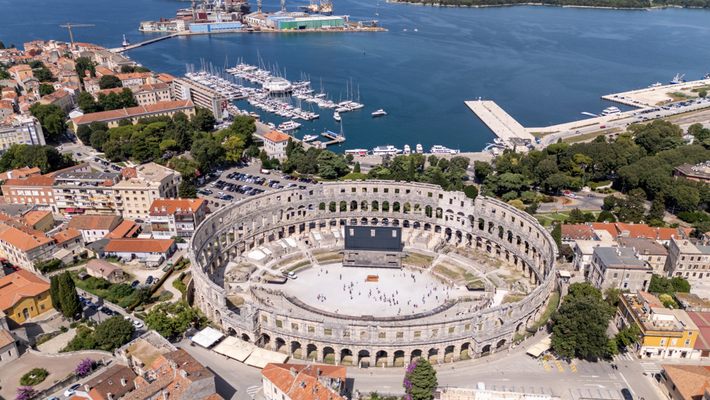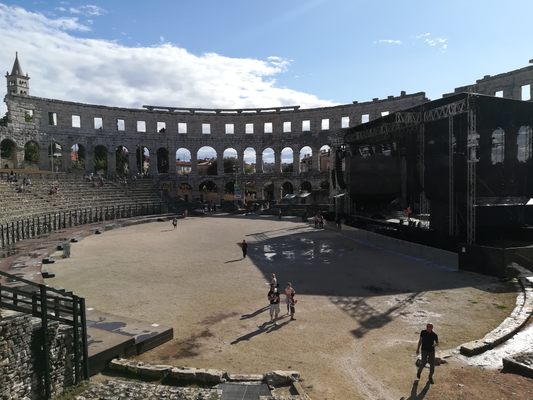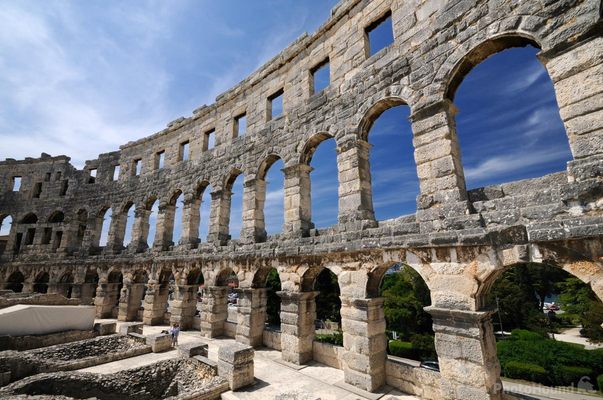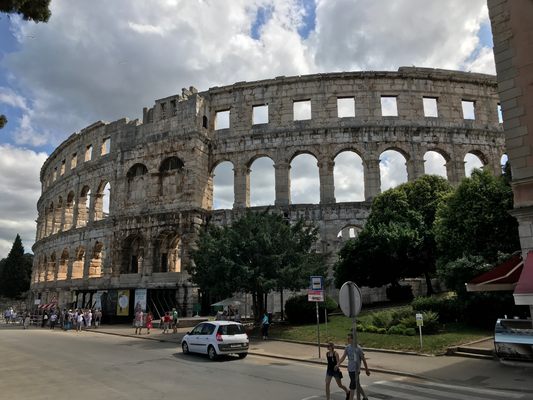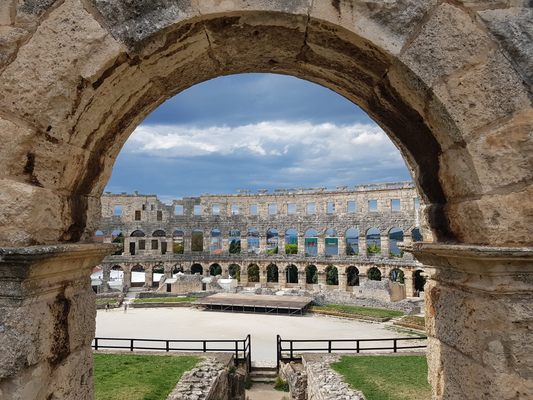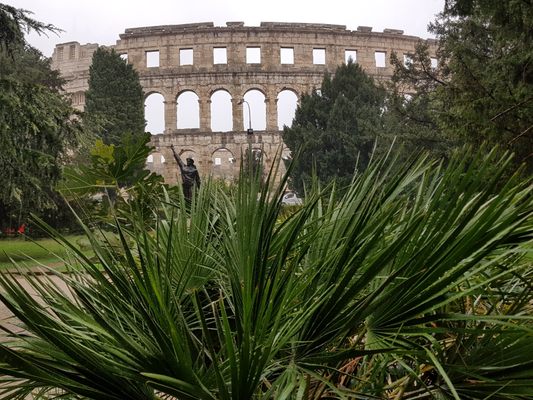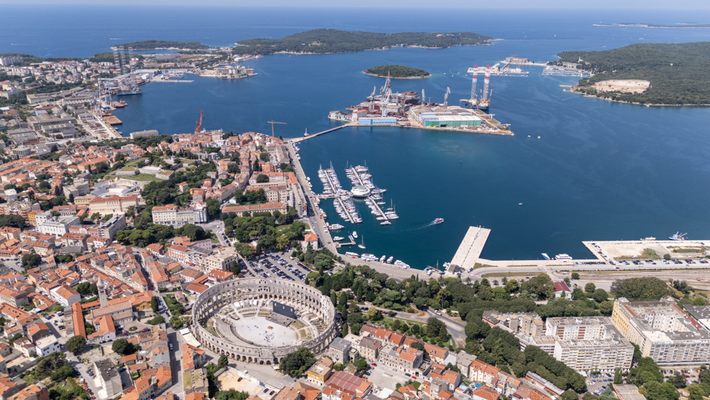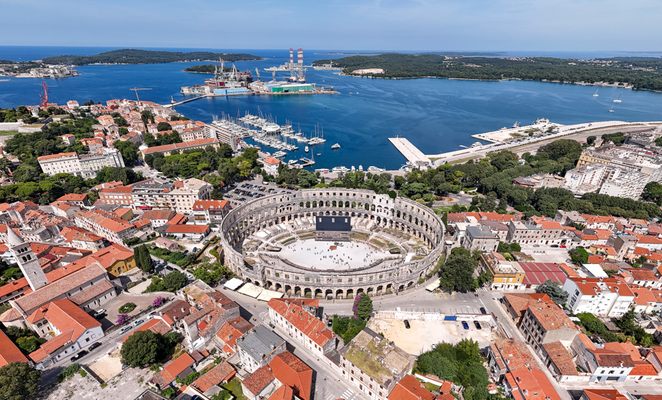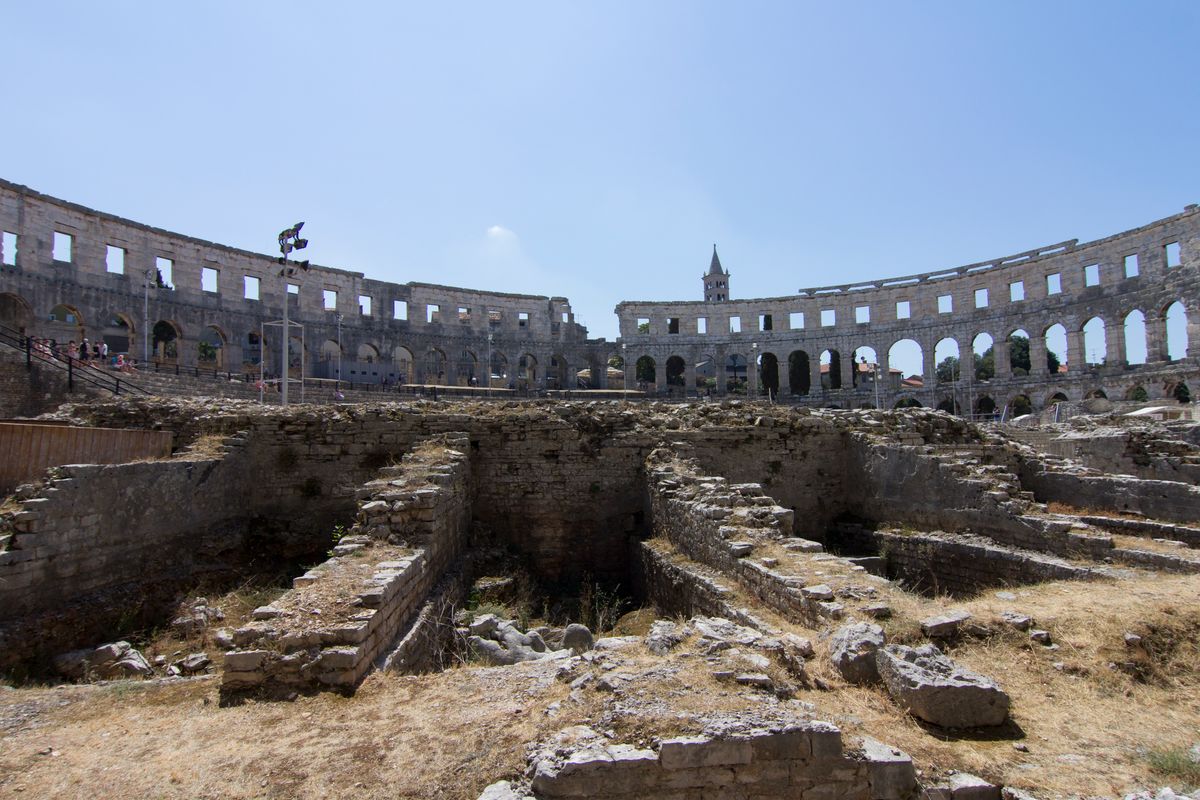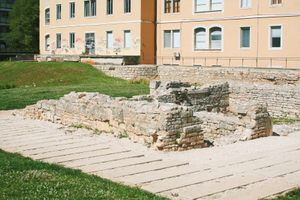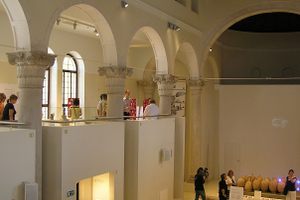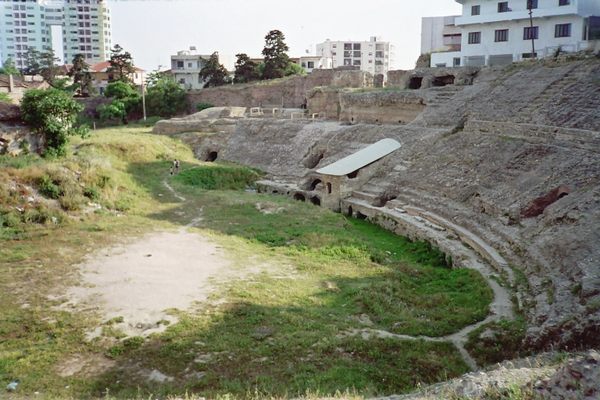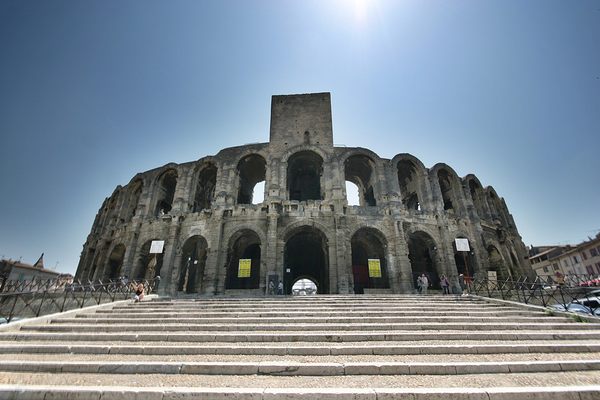About
It's well known that the Romans constructed hundreds of amphitheaters across their vast empire. These marvels of architecture can be found in Europe, Northern Africa, and the Middle East. Among them, the Pula Arena is one of the best-preserved. It's also the 6th largest amphitheater still standing and the only arena to retain its four side towers.
The arena was constructed somewhere between 27 BC and the year 68. During this time the city of Pula, then known as Pietas Julia, was establishing itself as an important city in the empire. The amphitheater was originally composed of timber and was later replaced by stone. The name of the arena comes from the word rena, meaning sand in Latin, as the inner space was once covered in sand.
For centuries, the theatre was used to accommodate gladiatorial fights until the 5th century when they were prohibited by emperor Honorius. However, combats between convicts and wild animals continued until the 7th century.
During the Middle Ages, the arena was used for grazing, fairs, and tournaments. As with many other Roman amphitheaters during this period, the arena was partially deconstructed and the stones were used for other buildings. In 1583, the theatre was proposed for deconstruction and reconstruction near Venice. The proposal was rejected, and a headstone celebrating Venetian senator Gabriele Emo's opposition was built on one of the towers surrounding the amphitheater.
The arena was restored in the early 19th-century and since the 1930s it has been used for theater productions, concerts, public meetings, military ceremonies, and even ice hockey games. Every summer it plays host to the Pula Film Festival.
Related Tags
Balkans Road Trip: Serbia, Croatia & Bosnia and Herzegovina
Traverse the beauty and history of the Balkans through locals' stories.
Book NowCommunity Contributors
Added By
Published
April 24, 2020


